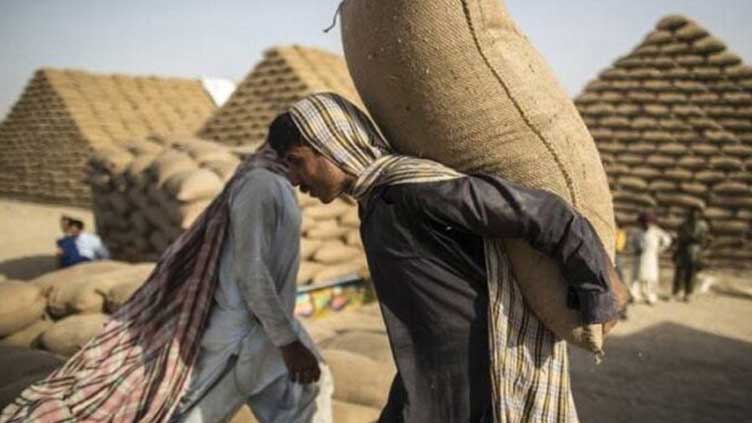Wheat stocks stood at 4.240mmt, sufficient to tackle local requirements

Business
Wheat stocks stood at 4.240mmt, sufficient to tackle local requirements
ISLAMABAD (Dunya News) – Wheat stocks of the country were recorded at over 4.240 million metric tons, which were sufficient to tackle the local dietary requirements as well as maintain strategic reserves for ensuring a smooth supply of grains in markets across the country.
So far the government had also completed the import of over 1.708 million metric tons of wheat to further strengthen domestic grains reserves, besides providing flour at sustainable prices, said an official in the Ministry of National food Security and Research.
He said that about 6.605 million metric tons of grains were procured during the procurement campaign for the year 2021-22, whereas carry-forward stocks of wheat were recorded at 1.831 million metric tons.
He informed that available wheat stocks were sufficient to fulfill the local consumption for 4 months, adding that partial harvesting of wheat began in February in some areas of the province and the fresh crop would start arriving, which would further supplement the local strategic reserves.
The human consumption was based on the per-capita consumption of 115 kg annually, he said adding that the estimates of per-capita consumption were provided by the Pakistan Bureau of Statistics and the population growth rate was 1.94%.
Meanwhile, the private sector had also procured about 4.1 million metric tons of wheat, he said adding that out of the total procured quantity, over 2.973 million metric tons were grained and private sector stocks stood at 445,992 metric tons.
He said that wheat crop had been cultivated over 21.345 million acres as against the set targets of 22.85 million acres During the current sowing season, adding that Punjab had achieved 97.17 per cent of its assigned sowing targets, whereas Sindh completed sowing on over 84.16 per cent.
The Khyber Pakhtunkhwa and Balochistan had completed wheat sowing on 87.07 percent and 77.21 percent areas respectively.


